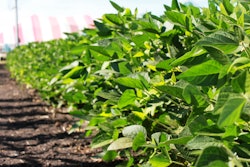After more than a few fairly good years for crop producers, 2014 is shaping up as a year where farmers are going to need to spend a little more time sharpening their pencils, a little more time sharing a cup of coffee with those that help them market their crops and maybe not looking at as much new paint as they did in 2012 or 2013. While we are still likely to see one of the most productive years ever for the sector and cash receipts will be much higher than what we observed throughout much of the 2000's, it may not be quite the ride we saw over the last five years.
Surprise is always part of agriculture and we may still find a couple as the 2013 crop goes into the bin, but in general corn and wheat supplies are expected to come back fairly strong this fall and futures markets are certainly suggesting much lower prices at harvest this year than was the case after the horrific drought of 2012. Some are even talking about farm level prices at harvest below the $4.00 per bushel mark. Soybeans may show a little more strength relative to corn due to a continuing expectation of a tight market, but as Southern Hemisphere crops role out, even the bean market may come under more pressure.
This is going to put producers in a place where they haven't been for a while. They are going to need to pay a lot more attention to their crop selection for the 2014 crop. With that downside pressure on corn prices, the decision in the past that was - to quote Homer Simpson 'duh' - on what to plant, may well mean producers are going to need to look carefully at their price expectations, at their input costs, at a variety of other factors before committing acres in 2014. They should also be thinking very hard even now about what they are going to be able to afford to pay for cash rents. We are rapidly coming to a day when those constantly escalating rents are going to be the subject of some tough conversations with landlords.
Producers are also going to be looking at the marketing of their 2014 crop - and any leftover product from earlier years - a lot differently than they have for the past five years. Selling off the combine or just whenever one needed the cash in retrospect wasn't all that bad a plan over the last five years, but as we move toward larger stock holdings, that may no longer be the situation. Producers should at least be considering moving to longer marketing cycles, to holding onto their crops a little longer for some potential upside movement rather than just dumping the harvest as soon as possible.
Whenever any of us are facing a situation where our income starts to take a hit, we all tend to draw back a little. That's probably going to be the situation as the year unfolds. Producers are going to look at $4.00 as opposed to $7.00 corn and think about a year of maintenance on existing equipment as opposed to shiny new paint. This reticence to spend money may well extend beyond paint and may go even so far as to show up in land purchases. This connection may take a little more time to come to pass, but higher interest rates and lower revenue streams with inflation under control usually mean one thing for land prices.
Overall one has to suspect that 2014 is going to be a good year. We are still talking about corn prices that have a potential to spike. Bean prices will be very competitive and may even attract several million acres from corn. For the sector as a whole, farmers are sitting on very strong equity positions, including cash, and as such should be able to be patient with their marketings and take advantage of favorable situations as they present. But we will also likely see a noticeable drop in overall farm income. Not a crash per se, as much as a weakening from the recent years. These are the times when producers - and those that help serve them - need to pay attention.
.jpg?auto=format%2Ccompress&crop=faces&fit=crop&h=48&q=70&w=48)

















